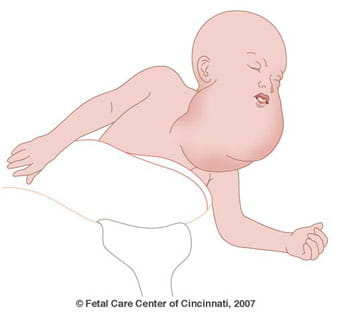What is Cervical Teratoma?
Cervical Teratoma / CT is a rare tumor of the neck made up of a variety of tissues (nerves, cartilage, skin and thyroid, among others) that come from more than one embryonic layer.
Since 2004, we have evaluated more than 107 patients for fetal tumors, including cervical, mediastinal and sacrococcygeal teratomas, neuroblastoma and renal masses.




